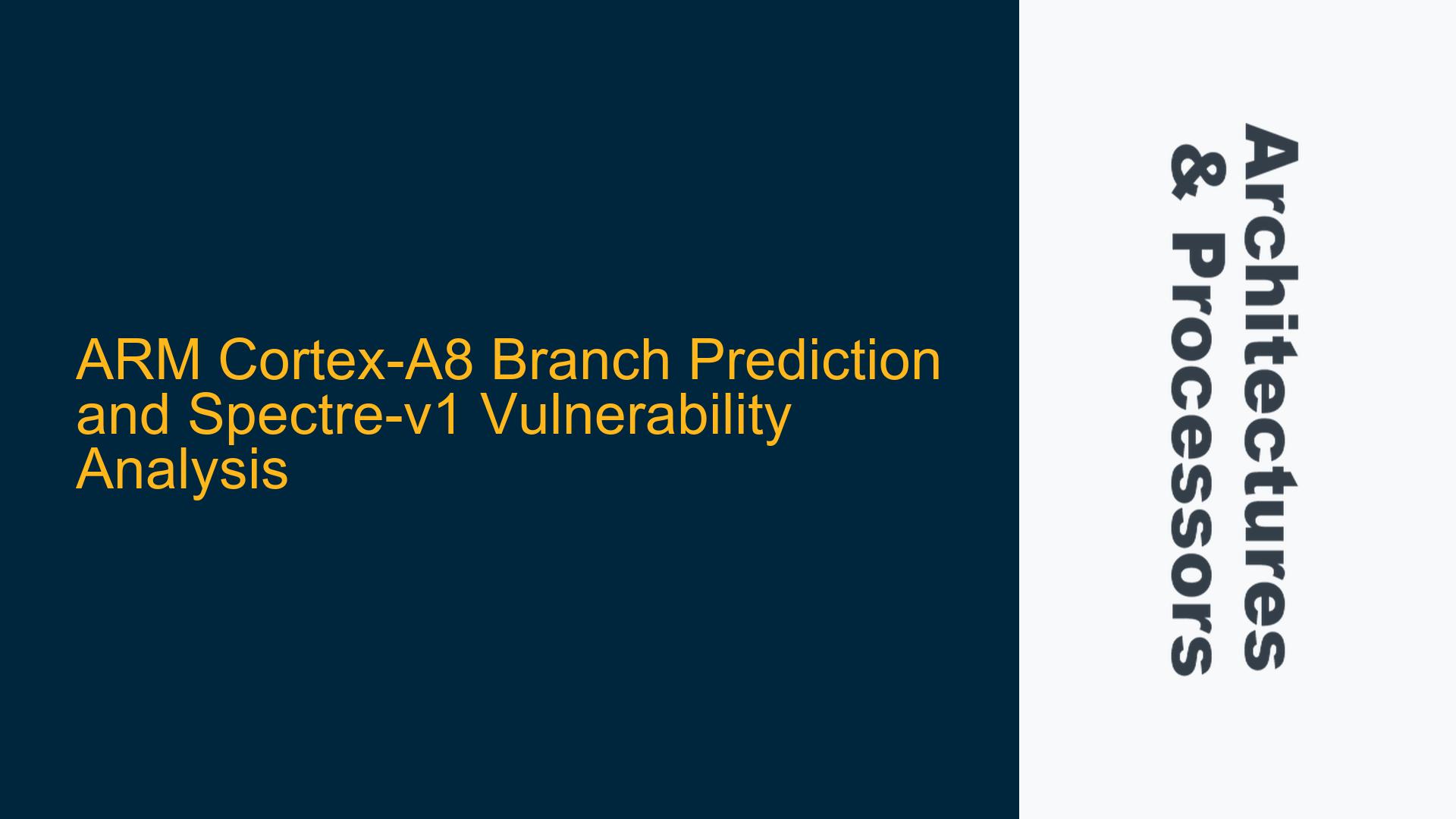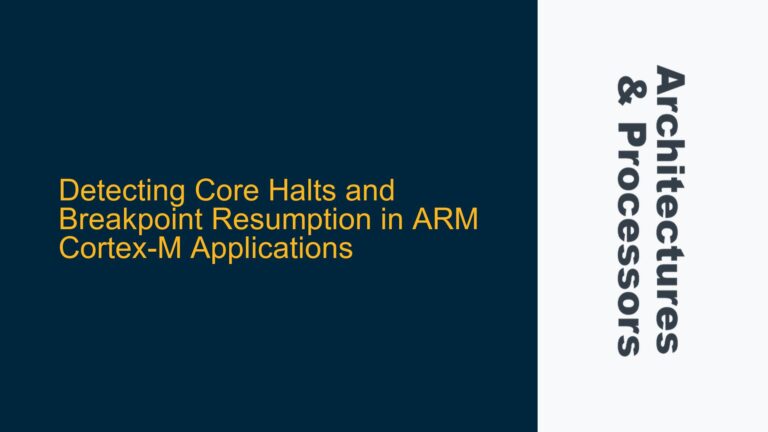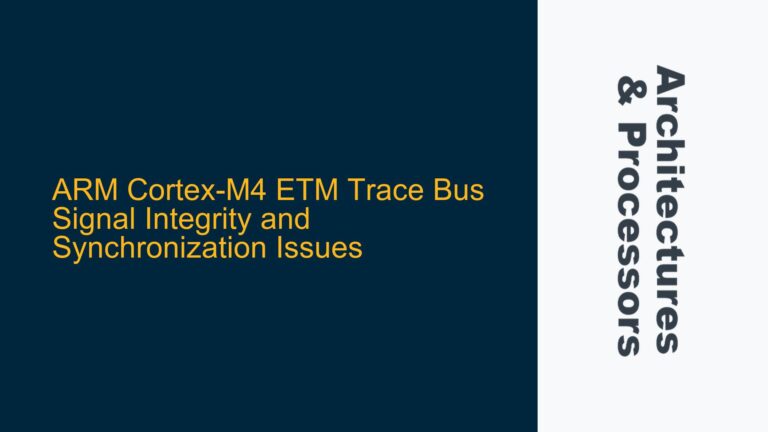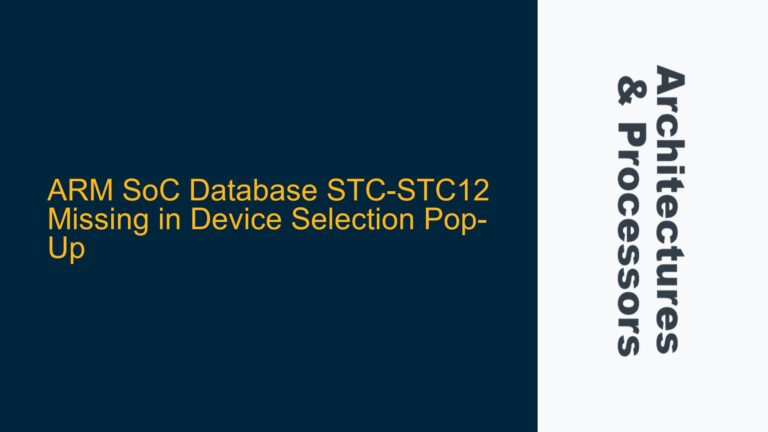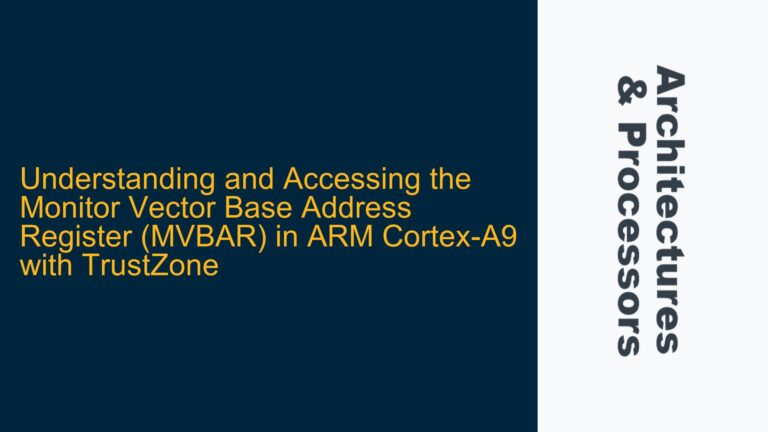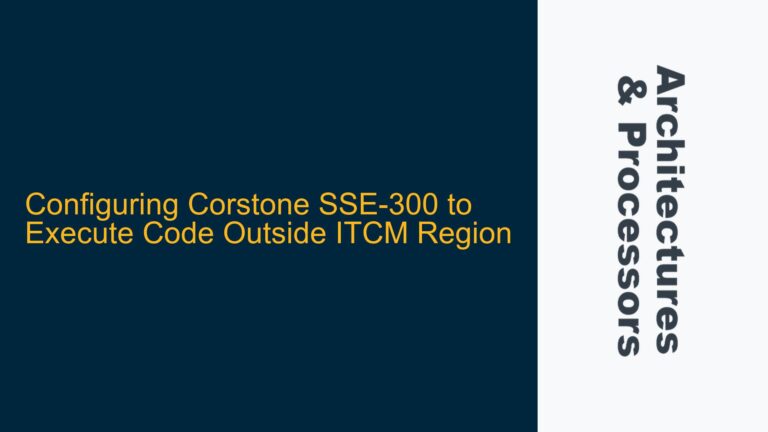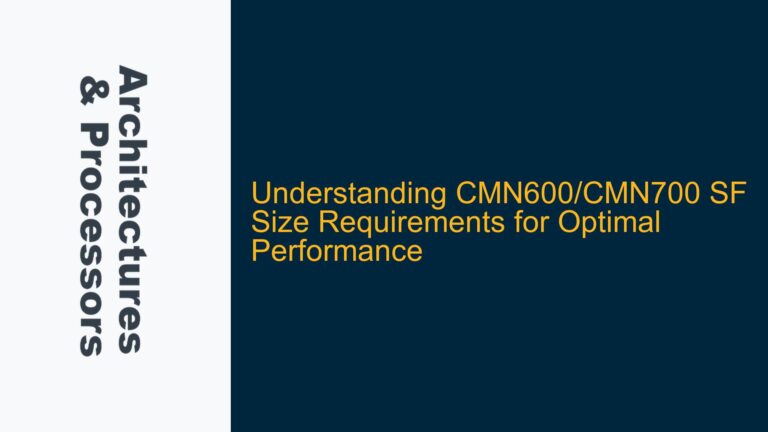ARM Cortex-A8 Branch Prediction Mechanism and Spectre-v1 Exploit Attempt
The ARM Cortex-A8 processor, like many modern CPUs, employs branch prediction to enhance performance by speculatively executing instructions ahead of time. This mechanism is crucial for maintaining pipeline efficiency, especially in deeply pipelined architectures. However, speculative execution can also introduce security vulnerabilities, as demonstrated by the Spectre-v1 attack. In this case, the user is attempting to replicate a Spectre-v1 proof-of-concept (PoC) attack on the ARM Cortex-A8 processor. The goal is to observe speculative execution of a memory access that should not occur under normal program flow due to a conditional branch. The user has implemented a code snippet designed to train the branch predictor to mispredict, leading to speculative execution of a memory access that would otherwise be protected by a conditional check.
The code provided attempts to exploit the branch prediction mechanism by repeatedly executing a conditional branch with a true condition, thereby training the branch predictor to expect the condition to be true. On the ninth iteration, the condition is expected to be false, but the branch predictor, having been trained to expect a true condition, may still speculatively execute the memory access. This speculative execution could potentially leak sensitive data if the memory access targets a protected region, as in the case of Spectre-v1.
The user’s expectation is that the ARM Cortex-A8 processor, which is known to be vulnerable to Spectre-v1, will exhibit the same behavior as observed on Intel x86 processors. However, the user is encountering issues in replicating the attack and is seeking clarification on whether additional steps are required to enable or observe the branch prediction behavior on the Cortex-A8.
Branch Predictor Training and Cache Eviction Strategies
The core of the issue lies in the interaction between the branch predictor and the cache subsystem of the ARM Cortex-A8 processor. The branch predictor is designed to guess the outcome of conditional branches based on historical behavior, while the cache subsystem is responsible for managing memory access latency by storing frequently accessed data closer to the CPU. In the context of the Spectre-v1 attack, the attacker must ensure that the target memory location is not cached, as this would prevent the speculative access from being observed.
The user’s code attempts to evict the SecretDispatcher array and the counter variable from the cache to ensure that any speculative access to these memory locations results in a cache miss. This is crucial for observing the effects of speculative execution, as a cache hit would not provide the necessary timing side channel to detect the speculative access. However, the effectiveness of the cache eviction strategy depends on the specific implementation details of the ARM Cortex-A8 cache subsystem, including the cache replacement policy and the granularity of cache lines.
The ARM Cortex-A8 employs a set-associative cache architecture, which means that cache lines are organized into sets, and each set can hold a limited number of cache lines. When a cache miss occurs, the cache controller must evict an existing cache line from the set to make room for the new data. The choice of which cache line to evict is determined by the cache replacement policy, which in the case of the Cortex-A8 is typically a pseudo-LRU (Least Recently Used) policy. This policy attempts to evict the cache line that has been least recently accessed, but it is not a true LRU policy due to hardware constraints.
The user’s code does not explicitly specify the cache eviction strategy, which could be a potential issue. Without a precise method for evicting the target memory locations from the cache, the speculative access may not result in a cache miss, making it difficult to observe the effects of the Spectre-v1 attack. Additionally, the timing of the cache eviction relative to the branch prediction training is critical. If the cache eviction occurs too early or too late, the branch predictor may not be sufficiently trained, or the speculative access may not be observable.
Implementing Precise Cache Eviction and Branch Predictor Training
To successfully replicate the Spectre-v1 attack on the ARM Cortex-A8 processor, the user must implement a precise cache eviction strategy and ensure that the branch predictor is adequately trained. The following steps outline a detailed approach to achieving this:
Step 1: Understanding the ARM Cortex-A8 Cache Architecture
The ARM Cortex-A8 features a Harvard architecture with separate instruction and data caches. The data cache is typically 32 KB in size and is organized into 4-way set-associative sets with a cache line size of 32 bytes. This means that each set can hold up to 4 cache lines, and each cache line can store 32 bytes of data. The cache replacement policy is pseudo-LRU, which approximates the LRU policy but may not always evict the least recently used cache line.
To evict a specific memory location from the cache, the user must ensure that the cache set containing the target memory location is filled with other data, forcing the cache controller to evict the target cache line. This can be achieved by accessing other memory locations that map to the same cache set as the target memory location. The number of memory locations required to fill the cache set depends on the associativity of the cache. In the case of the Cortex-A8, accessing 4 memory locations that map to the same cache set should be sufficient to evict the target cache line.
Step 2: Implementing Cache Eviction in the Code
The user’s code should be modified to include a precise cache eviction strategy. This can be done by accessing a series of memory locations that map to the same cache set as the target memory location. The following code snippet demonstrates how to implement this:
#define CACHE_LINE_SIZE 32
#define CACHE_ASSOCIATIVITY 4
char eviction_set[CACHE_ASSOCIATIVITY * CACHE_LINE_SIZE];
void evict_from_cache(char *address) {
for (int i = 0; i < CACHE_ASSOCIATIVITY; i++) {
eviction_set[i * CACHE_LINE_SIZE] = 0; // Access each cache line in the set
}
}
In this code, eviction_set is an array of memory locations that map to the same cache set as the target memory location. By accessing each element of this array, the cache set is filled, and the target cache line is evicted. The evict_from_cache function should be called before the speculative access to ensure that the target memory location is not cached.
Step 3: Training the Branch Predictor
The branch predictor in the ARM Cortex-A8 is trained based on the historical behavior of conditional branches. To train the branch predictor to expect a true condition, the user must execute the conditional branch with a true condition multiple times. The number of iterations required to train the branch predictor depends on the specific implementation of the branch predictor, but typically, 8-10 iterations are sufficient.
The user’s code already includes a loop that executes the conditional branch with a true condition 8 times. However, the timing of the branch predictor training relative to the cache eviction is critical. The branch predictor should be trained immediately before the speculative access to ensure that the predictor is in the desired state. The following code snippet demonstrates how to modify the user’s code to achieve this:
char SecretDispatcher[256 * 512];
int counter = 0;
// Evict SecretDispatcher from cache
evict_from_cache(SecretDispatcher);
while (counter < (512 * 9 + 1)) {
// Evict counter from cache
evict_from_cache(&counter);
if (counter < (512 * 9)) {
asm volatile ("LDR %0, [%1]\n\t"
: "=r" (value)
: "r" (SecretDispatcher + counter)
);
}
counter++;
}
In this modified code, the evict_from_cache function is called before each iteration of the loop to ensure that the target memory locations are not cached. The branch predictor is trained by executing the conditional branch with a true condition 8 times, and on the ninth iteration, the condition is expected to be false, leading to speculative execution of the memory access.
Step 4: Observing the Effects of Speculative Execution
To observe the effects of speculative execution, the user must measure the timing of the memory access. If the speculative access results in a cache miss, the access will take longer to complete, providing a timing side channel that can be used to detect the speculative execution. The following code snippet demonstrates how to measure the timing of the memory access:
#include <time.h>
char SecretDispatcher[256 * 512];
int counter = 0;
// Evict SecretDispatcher from cache
evict_from_cache(SecretDispatcher);
while (counter < (512 * 9 + 1)) {
// Evict counter from cache
evict_from_cache(&counter);
if (counter < (512 * 9)) {
struct timespec start, end;
clock_gettime(CLOCK_MONOTONIC, &start);
asm volatile ("LDR %0, [%1]\n\t"
: "=r" (value)
: "r" (SecretDispatcher + counter)
);
clock_gettime(CLOCK_MONOTONIC, &end);
long elapsed_time = (end.tv_sec - start.tv_sec) * 1e9 + (end.tv_nsec - start.tv_nsec);
printf("Access time: %ld ns\n", elapsed_time);
}
counter++;
}
In this code, the clock_gettime function is used to measure the time taken to execute the memory access. If the access time is significantly longer than expected, it indicates that the access resulted in a cache miss, suggesting that speculative execution occurred.
Step 5: Verifying the Results
After implementing the cache eviction and branch predictor training strategies, the user should verify the results by observing the timing of the memory access. If the speculative access is successfully observed, the user can conclude that the ARM Cortex-A8 processor is vulnerable to the Spectre-v1 attack. However, if the speculative access is not observed, the user should re-examine the cache eviction and branch predictor training strategies to ensure that they are correctly implemented.
Conclusion
The ARM Cortex-A8 processor, like many modern CPUs, is vulnerable to the Spectre-v1 attack due to its use of speculative execution and branch prediction. By implementing precise cache eviction and branch predictor training strategies, the user can successfully replicate the Spectre-v1 attack on the Cortex-A8. However, the effectiveness of the attack depends on the specific implementation details of the cache and branch predictor, and careful attention must be paid to the timing and sequence of cache eviction and branch predictor training. The steps outlined in this guide provide a detailed approach to achieving this, allowing the user to observe the effects of speculative execution and verify the vulnerability of the ARM Cortex-A8 processor to the Spectre-v1 attack.
